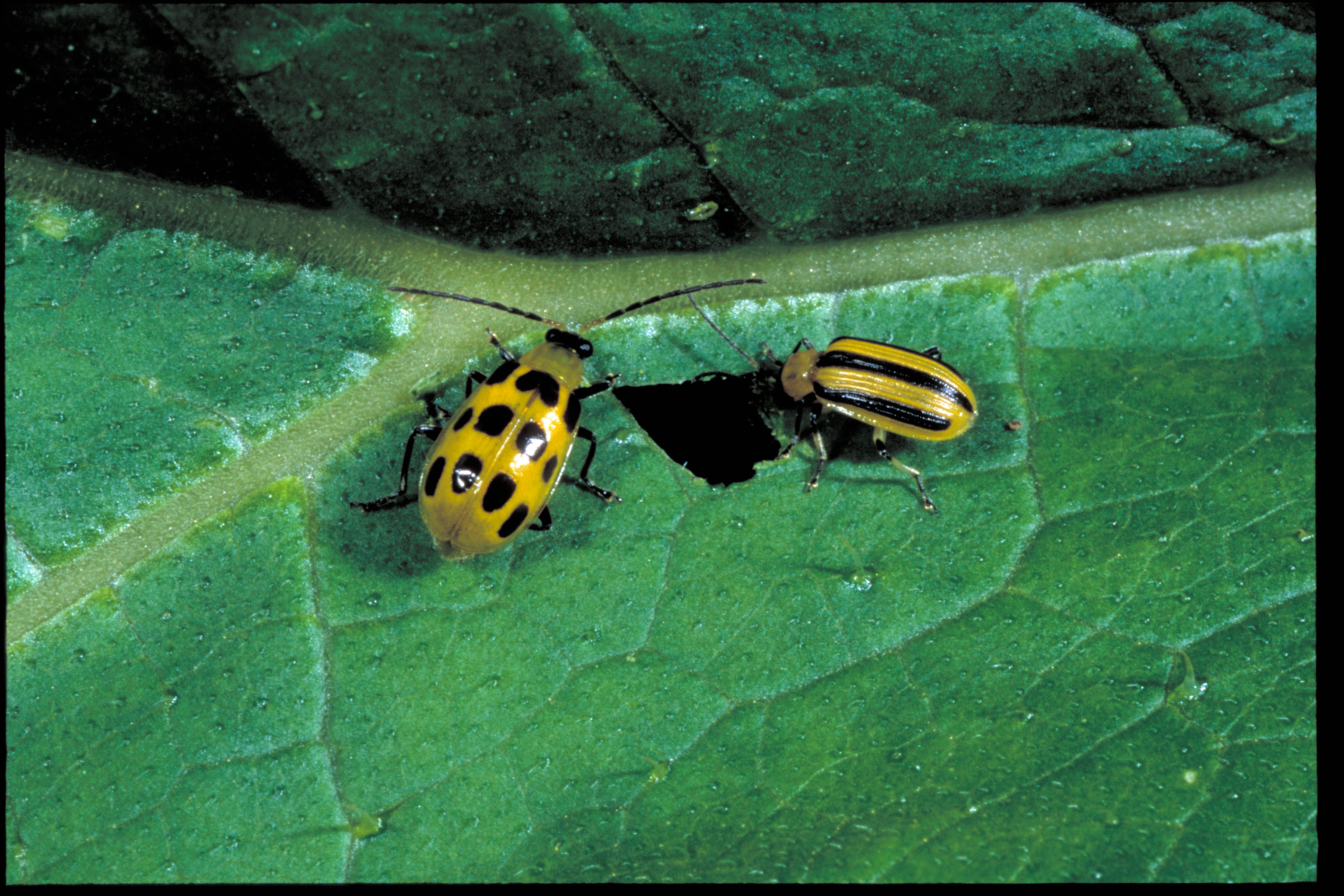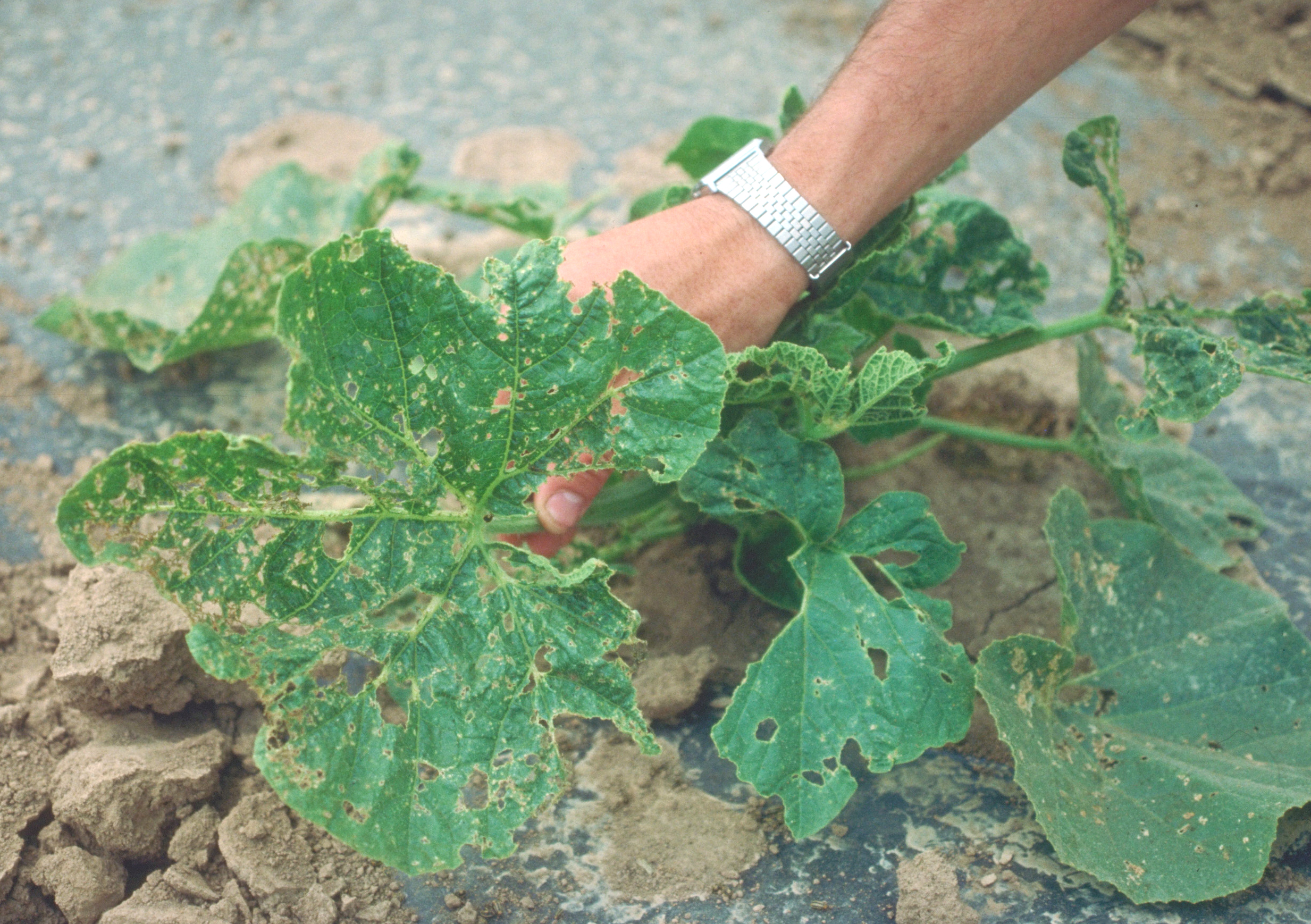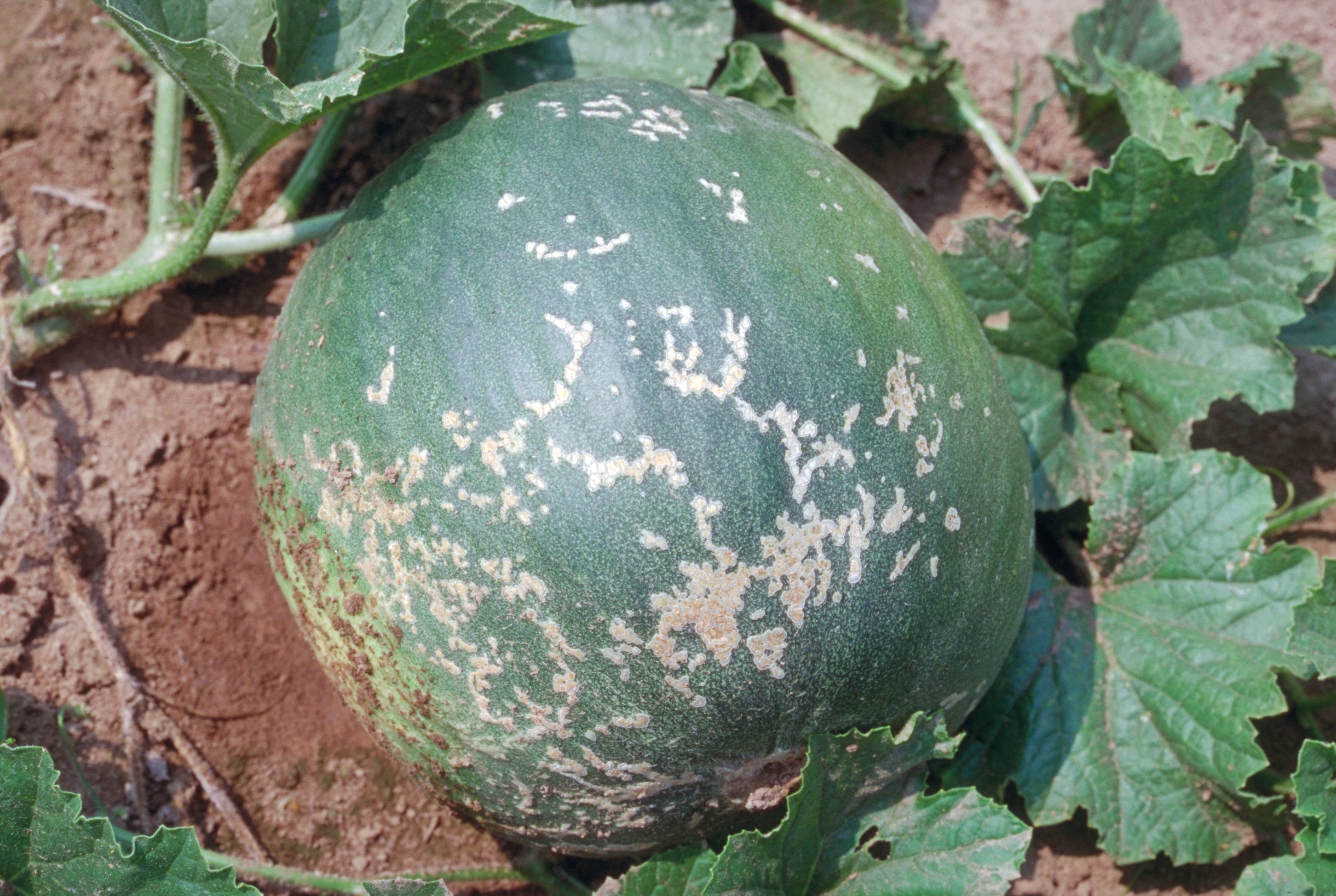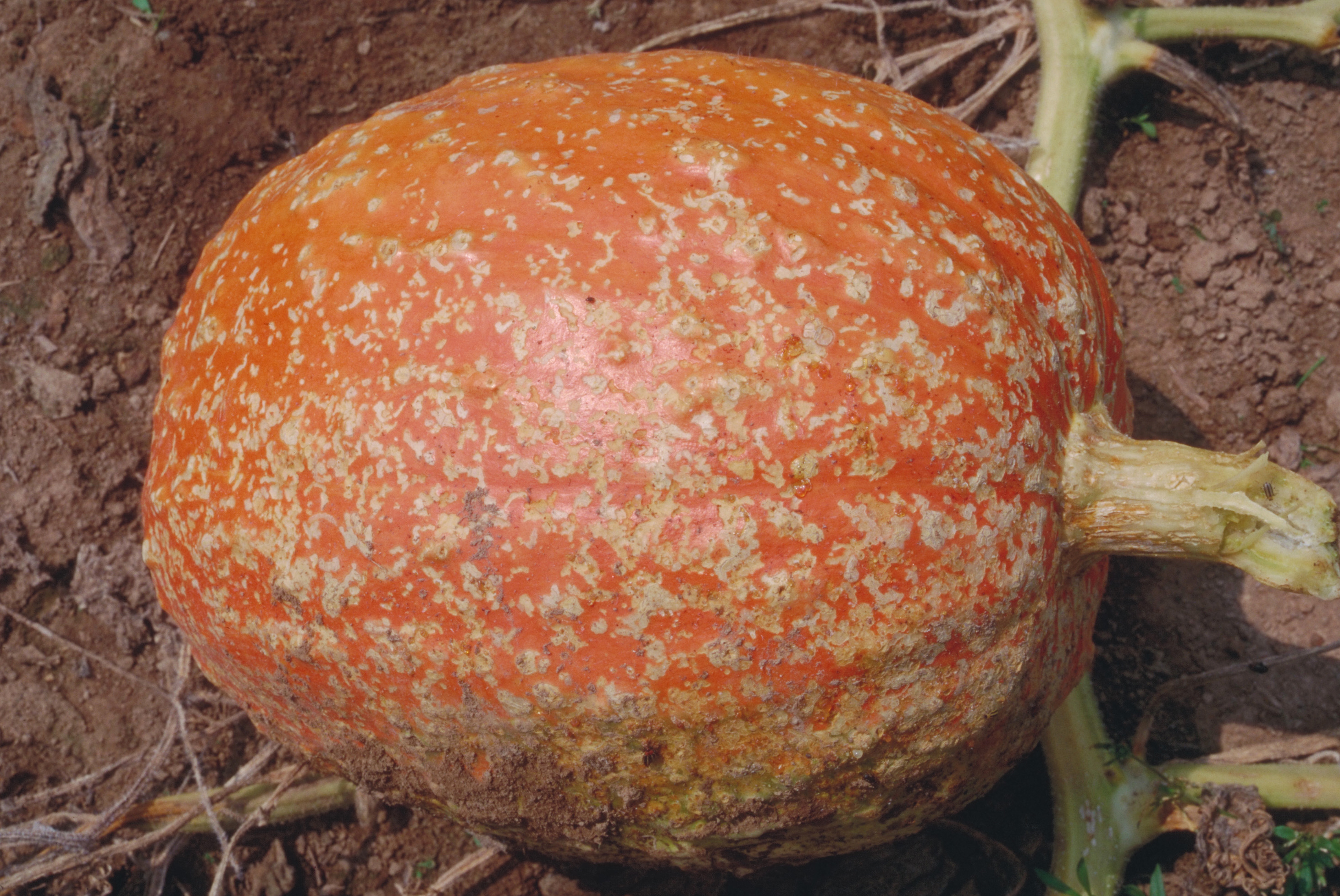Cucumber Beetles on Cucurbit Crops
Return to Insect Pests
Cucumber beetles. The striped cucumber beetle (Acalymma vittatum) and the spotted cucumber beetle (Diabrotica undecimpunctata howardi) are the most common insect pests on all the cucurbit crops. The spotted cucumber beetle is recognized by the 12 black spots on its yellow-green body, while the striped cucumber beetle has three black stripes on its wings. Both of these pests are highly attracted to cucurbits and will cause significant damage to young seedlings and ripening fruit. They also transmit the bacterium that causes bacterial wilt of cucurbits, which is particularly problematic in cucumbers and melons. Close to harvest, a second generation may appear that can feed on the fruit’s developing rinds.

Spotted and striped cucumber beetle adults.
(Photo: Ric Bessin, University of Kentucky)

Cucumber beetle damage to leaves.
(Photo: Ric Bessin, University of Kentucky)

Cucumber beetle damage to melon fruit.
(Photo: Ric Bessin, University of Kentucky)

Cucumber beetle damage to pumpkin fruit.
(Photo: Ric Bessin, University of Kentucky)
Cucumber beetle damage to seedlings.
(Photo: Ric Bessin, University of Kentucky)
Management:
- Early treatment is essential both for beetle and management of bacterial wilt. Begin treatment as soon as seedlings emerge or immediately after transplanting.
- A single post-transplant soil drench with a systemic insecticide can provide three to five weeks of control.
- Scout for beetles and apply foliar insecticides as necessary to protect susceptible plants, particularly close to harvest.
- Because watermelon is not susceptible to bacterial wilt, protection is necessary only when plants are small and beetle populations are high and again closer to harvest in order to prevent rind scarring by adult feeding.
Return to Insect Pests
